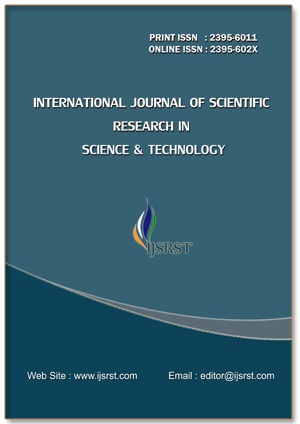Threat Foresight: Web Threat Detection and Forecasting Trends and Insights
DOI:
https://doi.org/10.32628/IJSRST25122209Keywords:
Web Threat Forecasting, AI-driven cybersecurity, Generative AI for Threat Analysis, Cyber Threat Intelligence, Deep Learning for Cyber Threat Detection, Time Series Analysis in Cybersecurity, Anomaly Detection in Web Security, Machine, Learning-Based Threat Mitigation, Real-Time Cyber Threat Monitoring, Benchmarking AI vs. Traditional Security ApproachesAbstract
The increasing sophistication and frequency of web threats necessitate advanced analytics and forecasting techniques to mitigate potential cyber risks. Traditional security measures, while effective to some extent, often struggle to adapt to evolving cyber threats. The advent of Artificial Intelligence (AI) and Generative AI (GenAI) has introduced novel methodologies for detecting, analyzing, and predicting web-based threats. This review paper explores the landscape of web threat analytics, evaluates traditional and modern forecasting techniques, and examines the role of AI and GenAI in enhancing cybersecurity. Furthermore, it highlights the challenges, limitations, and future directions in web threat analytics to guide future research and development.
📊 Article Downloads
References
Abd Al Hussein Qasim, M., & Abbas Flayh, N. (n.d.). Phishing website detection using machine learning: A review. Wasit Journal for Pure Sciences (Issue 2).
Ahammad, S. H., Kale, S. D., Upadhye, G. D., Pande, S. D., Babu, E. V., Dhumane, A. V., & Bahadur, M. D. K. J. (2022). Phishing URL detection using machine learning methods. Advances in Engineering Software, 173. https://doi.org/10.1016/j.advengsoft.2022.103288 DOI: https://doi.org/10.1016/j.advengsoft.2022.103288
Alevizos, L., & Dekker, M. (n.d.). Towards an AI-enhanced cyber threat intelligence processing pipeline.
Ghalechyan, H., Israyelyan, E., Arakelyan, A., Hovhannisyan, G., & Davtyan, A. (2024). Phishing URL detection with neural networks: An empirical study. Scientific Reports, 14(1), 25134. https://doi.org/10.1038/s41598-024-74725-6 DOI: https://doi.org/10.1038/s41598-024-74725-6
Goel, N., & Sethi, N. (2022). Cyber threat intelligence: A survey on progressive techniques and challenges. ResearchGate. https://www.researchgate.net/publication/361276941
Hamza, A. A., & Al-Janabi, R. J. S. (2024). Detecting brute force attacks using machine learning. BIO Web of Conferences, 97. https://doi.org/10.1051/bioconf/20249700045 DOI: https://doi.org/10.1051/bioconf/20249700045
Ibrahim, N. J. (n.d.). Improving the efficiency of brute-force attack detection using decision trees: An analysis study. Journal of Engineering, Mechanics and Modern Architecture, 2(11), 2023. https://www.researchgate.net/publication/375834787
Louw, M. T., & Venkatakrishnan, V. N. (n.d.). Blueprint: Robust prevention of cross-site scripting attacks for existing browsers. www.xssed.com
Sadasivam, G. K., Hota, C., & Anand, B. (2018). Honeynet data analysis and distributed SSH brute-force attacks. In Towards extensible and adaptable methods in computing (pp. 107–118). Springer Singapore. https://doi.org/10.1007/978-981-13-2348-5_9 DOI: https://doi.org/10.1007/978-981-13-2348-5_9
Seker, E. (n.d.). Cyber threat intelligence: Understanding fundamentals cyber threat intelligence (CTI). https://www.researchgate.net/publication/335692544
Shelatkar, T., Tondale, S., Yadav, S., & Ahir, S. (2020). Web traffic time series forecasting using ARIMA and LSTM RNN. ITM Web of Conferences, 32, 03017. https://doi.org/10.1051/itmconf/20203203017 DOI: https://doi.org/10.1051/itmconf/20203203017
Shuvo, M. A. R., Zubair, M., Purnota, A. T., Hossain, S., & Hossain, M. I. (2021). Traffic forecasting using time-series analysis. Proceedings of the 6th International Conference on Inventive Computation Technologies (ICICT 2021), 269–274. https://doi.org/10.1109/ICICT50816.2021.9358682 DOI: https://doi.org/10.1109/ICICT50816.2021.9358682
Swathi, K. (2022). Brute force attack on real-world passwords. International Journal of Research Publication and Reviews, 3(11). www.ijrpr.com
Downloads
Published
Issue
Section
License
Copyright (c) 2025 International Journal of Scientific Research in Science and Technology

This work is licensed under a Creative Commons Attribution 4.0 International License.
https://creativecommons.org/licenses/by/4.0




